Hyundai has never quite managed to crack the executive sedan formula. Its first-gen Elantra launched in India in 2004, met with limited success. And when the Elantra nameplate made a comeback to India in 2012 after a gap of four years with the swoopy ‘fluidic’ version, the car didn’t win over half as many buyers as the segment bestseller. However, this latest generation Elantra’s chances seem a whole lot brighter. Eye-catching design aside, it’s got a smart new interior, it’s loaded with equipment and more importantly, it’s priced competitively as well.
The Skoda Octavia, in contrast, is the most expensive car in this segment. But that’s just one aspect of the package, because the Skoda seeks to lure you with its strong build, high-quality interiors and exciting driving experience. Chevy’s Cruze, fresh from an update earlier this year, comes into the competition with the most powerful engine in the segment, a sporty cabin and more equipment than ever before.
For this comparison, we’ve considered the diesel automatic versions of these three cars and this should explain why we’ve left out the popular Corolla Altis – Toyota doesn’t make the Corolla diesel with an automatic gearbox. Our sole focus is to pick the best diesel automatic sedan in the Rs 14-20 lakh range.
What are they like to drive?
If there’s one thing the Hyundai Elantra’s engine stands out for, it’s got to be refinement. There are minimal vibrations felt at idle and noise levels remain relatively low even when you rev the engine hard. The Elantra’s 128hp, 1.6-litre diesel engine is the smallest here and makes the least power too. No surprises then that it’s not as quick as its rivals when talking acceleration from a standing start or through the gears. But despite what the numbers say, the Elantra is not slow and for the daily grind, performance is more than adequate. In fact, the Elantra’s easy-going nature makes it a car you'd enjoy driving a lot.

You can’t completely get around the slight delay in power delivery on flooring the Elantra’s throttle but what’s nice is that you can fine-tune the driving experience thanks to three driving modes on offer that alter engine, gearbox and steering settings. Standard is the default mode and works fine, though we did wish the six-speed gearbox was quicker to shift gears. In Eco mode, the settings are optimised for efficiency; the gearbox is tuned to shift up to the highest possible gear for a given speed to keep engine revs low. Performance as a result takes a hit. Of course, the mode to be in if you are in a hurry is Sport. The gearbox responds quicker in this mode, and holds gears for longer to make use of all of the engine’s power. The Elantra also allows manual control of the gearbox via the gear lever, but sadly there are no paddle shifters.
The Octavia, on the other hand, gets paddle shifters and importantly, also offers lots of reasons to use them. Sure, the Skoda’s 2.0 diesel engine makes a middle-of-the-road 143hp, but it’s the way the engine produces power that makes it the most exciting. Step on the accelerator pedal hard and there’s a pause, followed by a big tidal wave of power which makes the front tyres struggle for grip. What’s more? This engine is free-revving for a diesel and readily spins all the way to 5,000rpm. The punchy engine comes coupled to a super-quick six-speed gearbox that offers instantaneous shifts in both auto and manual mode. And the Octavia is the quickest to 100kph too. 0-100kph comes up in 9.34 sec which makes it significantly quicker than the Elantra and Cruze. Also, thanks to the performance on hand and ready access to power, the Octavia makes light work of overtaking traffic. Were we to bring up a negative, it would be the drone from the engine and the vibration experienced at idle that makes it noisier than the Elantra.

Unfortunately, a noisy engine is something Cruze buyers will have to live with. The 2.0-litre diesel motor emits a sharp clatter at idle but thankfully things smoothen out as you build speed. With 166hp on tap, the Cruze’s engine is the most powerful here and performance is impressive. There’s a strong burst of acceleration and considerable punch when you step on the accelerator hard. However, the Cruze feels its best in average driving conditions. Drive it at 100 percent and you can tell that the engine doesn’t like to be spun hard and that the gearbox is also quite slow to shift. This does dilute driving pleasure by a fair bit.
What’s also a dampener is the Cruze’s handling, both at low and high speeds. The steering feels quite heavy in town and in general, the Cruze doesn’t feel as agile as its newer rivals. On that note, while true handling has never been a strong point of Hyundai cars, the new Elantra does feel better than its predecessor. It’s still not a wildly exciting car to drive, but it grips well and feels composed and planted around corners. The driving modes vary steering weight – from light in Eco mode to well-weighted in Sport, where the latter does help give that extra bit of connect with the car. Again, it’s the Octavia that feels the sportiest in the curves. The steering is light but fluid and there’s sufficient feel too. It feels safe and secure and lures you into driving a bit faster on your favourite set of roads. At the same time, from behind the wheel, the Octavia also manages to feel smaller than its size, which is particularly helpful.
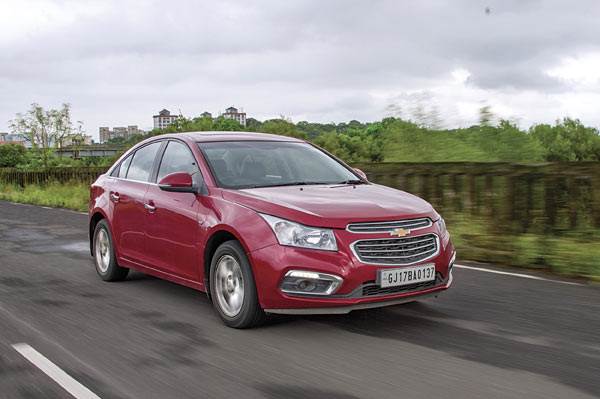
What is somewhat of a spoiler in the Octavia is the low-speed ride. The suspension setup is definitely the stiffest of the three and as a result, the car thuds through the sharper potholes scattered around our city. Simply put, owners won’t be as comfy as they could’ve been in the Elantra in the city. In terms of ride, the Hyundai has an ace up its sleeve. The low-speed ride is the plushest with the comfort-oriented suspension soaking up almost everything our bad roads throw at it. The suspension does its job silently, even when it’s at the receiving end of some harsh treatment – so much so that you end up taking some liberties over rutted roads. Pick up the pace and the ride remains even at three-digit speeds. However, the Elantra doesn’t ride as flat as the Octavia and there are some body movements at speed too.
Pardon the pun, but the Cruze makes for a good cruiser. The Chevy feels stable at high speeds and also takes sudden unwanted bumps at speed without feeling twitchy. Low-speed ride is second to the Elantra’s. The Cruze takes medium-sized bumps in its stride but sharper bumps do catch the Chevy off-guard. Also, the suspension tends to get noisy as well.
What are they like inside?
Step inside the Elantra and the very European design theme continues. The dashboard design is attractive yet functional with a large 8.0-inch touchscreen taking centrestage. The infotainment system is nice and straightforward to use and also features a useful split screen layout that packs in all the information you’d need. Positioned high up on the dash, the Elantra’s large central air-con vents do a good job of cooling the big cabin. The front seats are generously proportioned and comfy and there’s ample support for even large sized passengers. What’s more, the Elantra also gets ventilated front seats that work well to keep your backside cool on a hot day. Drivers will also like the steering as it feels good to hold, and the switchgear that operates with a satisfying heft.
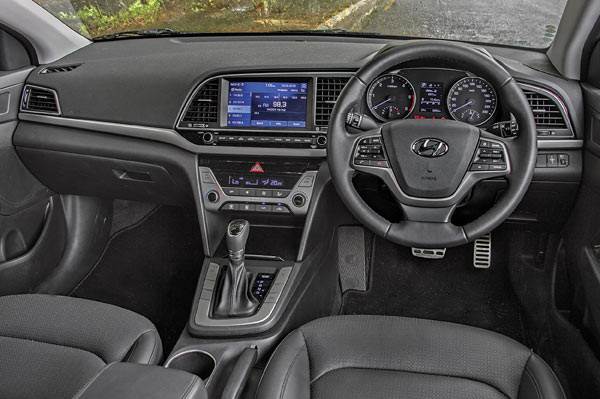
What also helps uplift the ambience inside are the good levels of fit and finish with a lot of surfaces finished in soft-feel plastics. Things are not quite as rosy in the back as the rear seats are a touch low, thigh support is a tad short and even headroom is just about adequate. Still, chauffeur-driven buyers do have plenty of legroom to spread out and the cabin is also free of any road noise.
If the Elantra’s cabin is well finished, the Octavia’s sits a few notches above on the quality scale. The interior reeks of quality and everything from the felt-lined door pockets to the leather upholstery looks and feels rich. Adding to the premium look is the Skoda’s black and beige cabin theme that makes the already spacious cabin look airier still. The Octavia’s dashboard doesn’t break new ground, but it is neat and uncluttered and also scores on practicality. The 6.5-inch touchscreen infotainment system has loads of information on offer, but it’s simply not as fluid as the Hyundai’s unit. Front seat occupants are treated to the largest seats here and comfort levels are really good too. Top-spec Octavias also get memory seats which is a useful feature in a household with multiple drivers. And it only gets better for the rear seat passengers. There’s easily the most amount of legroom and headroom while the relatively high position of the seat makes getting in and out an easy affair. However, some find the rear-seat backrest positioned a touch too upright.
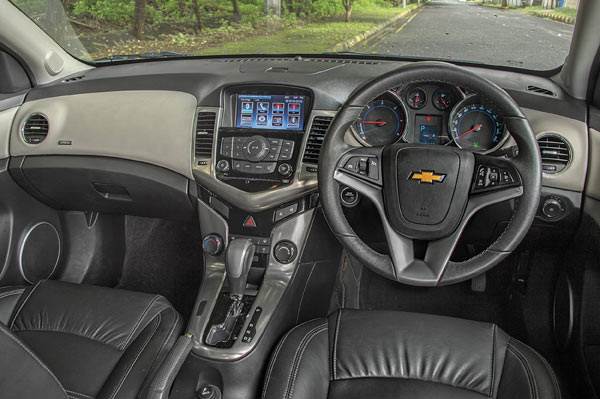
After a go in the Octavia, the Cruze’s cabin feels smaller than it really is. Rear legroom is significantly down on its rivals, cabin width is insufficient for three occupants and headroom in the back is limited too. The front seats are deeply bolstered and give a sporty feeling but also prove to be too snug for ahem, healthier, occupants. There’s a hint of Chevrolet’s iconic Corvette sportscar in the layout of the dash and the effect is nice. However, plastic quality is down on rivals and even panel fit is inconsistent throughout the cabin. The Cruze’s new touchscreen infotainment system is also not great. For one, it’s too deep set on the centre console for easy access. The interface also doesn’t pass muster for a car at this price.
Equipment and Safety
All three cars get 16-inch alloy wheels, LED daytime-running lamps, sunroofs, leather seats, cruise control, rear parking cameras and tilt and telescopic adjust for their steering wheels. All three cars get climate control, though the Elantra and Octavia also get more comprehensive dual-zone units. The Cruze also surprisingly misses out on rear air-con vents, while the Elantra is the only car to get ventilated front seats.
Each of the three cars also get steering-mounted audio controls, Bluetooth for telephone and audio functions and touchscreen infotainment systems. The Elantra has the largest screen and like the Octavia’s system comes bundled with Apple CarPlay and Android Auto. Skoda offers the Octavia with paddle shifters and memory function for the front seats too.
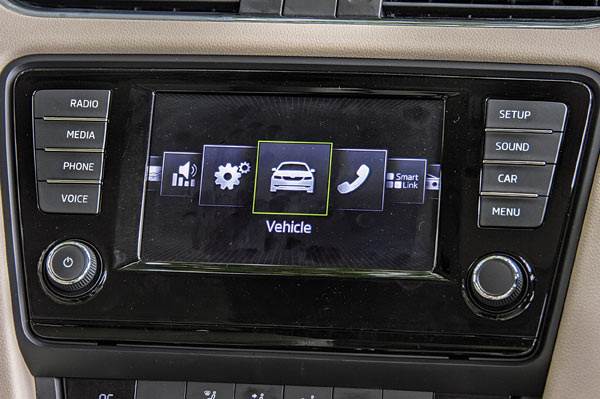
In terms of safety features, the Elantra and the Cruze get a maximum of six airbags each, whereas the Octavia comes with a total of eight.
All three sedans get disc brakes for all four wheels along with anti-lock brakes, while the Elantra and the Octavia also get electronic brake distribution.
Buying and Owning
Available only on the fully loaded SX(O) variant, the Elantra diesel automatic costs Rs 19.19 lakh (ex-showroom, Delhi). It’s important to note this is an introductory price and a hike is slated for January 2017. Hyundai offers a three-year/unlimited-mileage warranty on the Elantra. Of these cars, the Chevrolet Cruze automatic, priced at Rs 17.45 lakh, is the most affordable. It comes with a three-year/100,000km warranty. The Skoda Octavia is the costliest contender here. It has three diesel-automatic variants priced between Rs 19.99-22.64 lakh, all of which get a four-year/100,000km warranty.
Verdict
The once popular Chevrolet Cruze today comes across as a car that’s past its prime. Yes, the Cruze has a strong engine and a decent ride and it’s a nice drive but see it in light of its competitiors and it falls short in many areas. But it is also the cheapest of the lot and that’s the prime reason you should be interested in one. An all-new Cruze comes next year and could be worth the wait.
If the driving experience is the main parameter, the Octavia is the car for you. It’s got a punchy motor, nice steering, and is really good to drive. It’s also got the nicest interiors and feels the most luxurious too, and has the best seats. And with eight airbags, it ticks the essential safety box too. However, the Octy is pricey with the top-end version costing Rs 3.6 lakh over the Elantra and a whopping Rs 5 lakh more than the Cruze! Great as the Octavia is, it’s a bit of a stretch and is likely to be more expensive to maintain as well. Skoda has sweetened the deal with affordable service packages and a class-leading warranty, but it's still a car that’s more for the heart than the head; especially considering how used car prices fall.
The new Elantra is a big step up from the car it replaces and offers a whole lot more. In this diesel automatic guise, there’s enough power to keep you satisfied. The engine is refined and smooth. It has the best low-speed ride of the three and that’s definitely a big advantage in our country. The Elantra should have been a bit more involving to drive and if it had a nicer back seat, it would have been a more convincing pick. But, for the money, the Elantra certainly makes the most sense and is the one that just about comes on top.

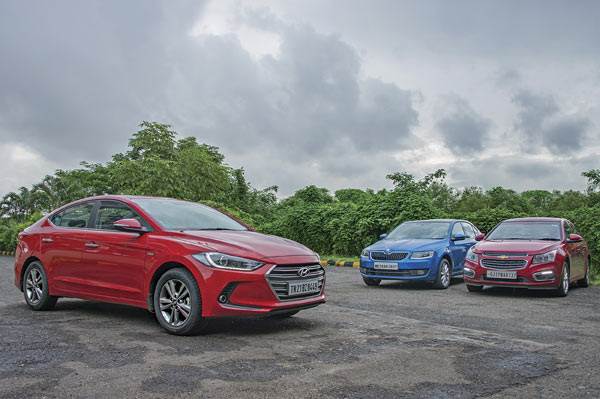
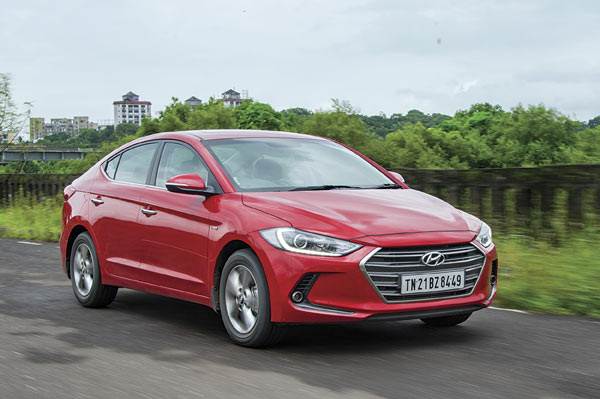
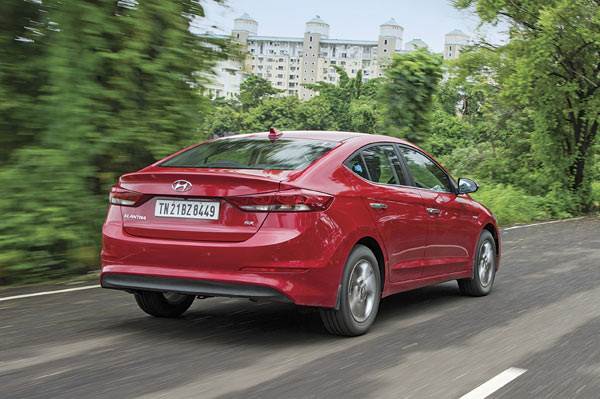
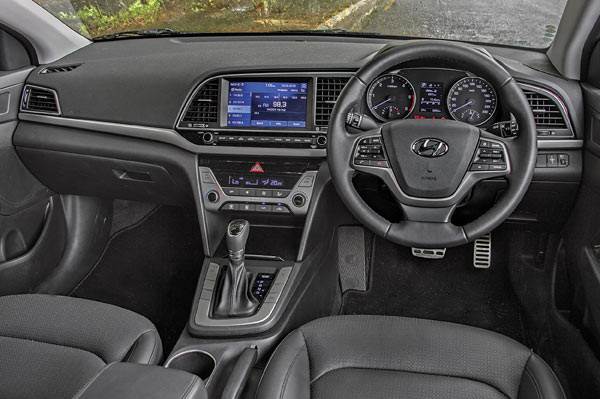


Comments
Member Login
Personal Details
No comments yet. Be the first to comment.